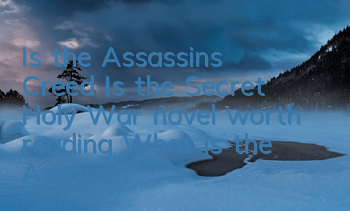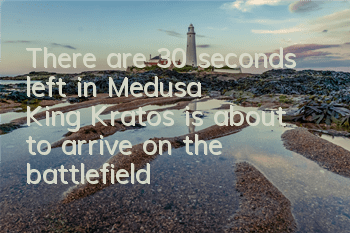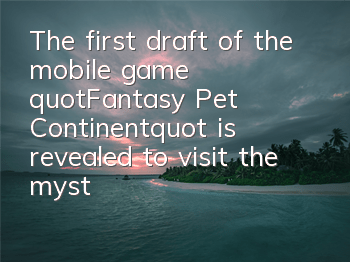Every time I visit the forum, I see someone discussing Assassin's Creed novels, especially the main series of novels written by Oliver Bourden. Because the novels in this series are closely related to the game, many people want to know whether to read the novel before and after the game or simply not read it. The short answer is that although there is a lot of content in the novel that is a retelling of the game plot, it is somewhat different from the game. So, are these novels worth reading? It depends largely on what you expect.
So, I decided to write this analysis guide to give some reference information to those who want to buy and read. I studied eight novels that have been released, compared them with the game text on the Wiki, and calculated the proportion of those adapted and completely original content. I have to say that some results scared me. However, it is important to note that these data are just estimates, because it is difficult to completely separate the game plot and narrative paragraphs in the novel. At the same time, I am using the Brazilian version, so there will be some differences between the translations of each language, and the percentage used in the chart is not strictly calculated by the number of pages. The "new content" used below refers to everything that is not directly presented in the game. So if a new conversation appears in a game mission or the game mission is completely different from the way it unfolds in the game, I also count it as new content.
Renaventure (2009)
Original content: about 15%
The Renaissance is the first Assassin's Creed novel, which was released with Assassin's Creed II in 2009. At that time, the novel had a lot of exclusive content, and the game then completed these plots in the form of DLC and fraternity side missions. This is a novel adapted from Assassin's Creed II without Desmon (you all know that Oliver Borden's novels do not include modern plots), which describes the story of Egio Auditore growing from a teenager to an assassin against Rodrigo Borgia.
Although it is the same story, the novel has some differences, and many of the space explains the historical background (after all, Bourden is a historian who studies the Renaissance). Some game missions have new conversations: when chasing Vieri, for example, Egio must first confirm that a Mario's old friend has betrayed the Patch family. Some chapters in the novel are also more accurate than the historical aspects of the game: Egio heard that Baroncelli Bernardo was hanged, and the game was killed by himself. Meanwhile, the plot is no longer limited to three or four cities – Egio actually went to many cities in northern Italy, and his friend Leonardo da Vinci didn’t always live in Florence or Venice.
The novel also describes Egio's love story, and his relationship with Christina (these plots later appeared in the memories of Christina of the Brotherhood), Rosa and Katrina were handled better. Speaking of Katrina, the novel has already written this part of the plot before the two DLCs of the game have been released. Sequence 12 (Frie’s Battle) takes up a relatively large area, while Sequence 13 (Vanity Fire) isReduced: Only one of the nine assassination targets was mentioned. Speaking of this, many people who have played games will be confused about DLC: there is a ten-year gap between Sequence 12 and Sequence 13. On the game timeline, this gap was filled by the Nintendo DS game Assassin's Creed: Exploration, and it was completely skipped in the novel. Egio traveled throughout Italy during this decade, actively searching for the assassination target Girolamo Savonarola.
Fraternal Society (2010)
New content: about 35%
Like the game, the novel starts from where the previous work ends, and the time spans this event from 1500 to 1503. I think it was Bourden deliberately trying to coincide with the time of the incident's death with the time of the pope's death in history. Just like the difference between Renaissance and Assassin 2, to some extent, the difference between the Brotherhood and the novel is even greater. The Brotherhood game is much shorter than the previous one, but the novel is almost as long as the Renaissance, so there are a lot of explanatory texts, as if the characters suddenly become history teachers, making sure we know everything that happened at this time. There is a very long chapter at the beginning, with Egio and Machiavelli reaching Rome, and this is the teaching chapter of Sequence 2 in the game. I think this is strange in the novel. This teaching can tell players the rules of activity in the open world, but there is no reason to appear in the novel. Although these contents are not harmful to the plot, it always feels uncomfortable to appear here. Between Sequence 7 and Sequence 6 (the opposite in the novel), Egio had the same conversation as he talked to Fuck, La Volpe.
Back to the plot, the novel also describes the story of Egio and Katrina. Although she doesn't have many scenes in the game, we can know what Egio thinks about her in the novel. In the game, La Volpe suspects Machiavelli is going to betray the Assassin Group, and in the novel, even Egio has some doubts. The new content in the ending part of the novel accounts for the largest proportion. Like the previous work, there is a four-year gap between the penultimate mission of the Brotherhood and the last mission. The novel skips the DLC of Leonardo da Vinci (set in 1506), and replaces Egio travels to Spain to search for news about Cizel Bogia.
Secret Holy War (2011)
New content: about 30%
Released in mid-2011, The Secret Holy War is not just a simple novelization of Assassin's Creed 1 - it is also a prelude to the book of Revelation. The novel almost describes the life of Altaïr Ibn Rahad in the mouth of Italian assassin Nicolo Polo. After a brief conversation with his brother, the novel starts not with the first mission of Assassin's Creed 1, but with Saladin's siege of Masyaf 15 years ago, Altayne, who was only 11 years old, witnessed his father's death. After that, I turned to the game plot. The first two novels have adapted the game, and "Secret Holy War" is almost the line book of the game, which seems to be because the game did not have it back then.Apology made by the subtitles.
The novel describes Altay's childhood life and his relationship with Abbas, which I think is interesting. At the same time, the novel shows Altaïr's temperament. I know he is a rational person and will not be lost in passion for a moment. In the novel, he is more humane (maybe we can't see his expression in the game, we can only listen to the sound). After the first generation of plot ended, the novel follows the plot of "Bloody", and Altaïr meets Maria and starts writing a manuscript.
After this is Altaïr's later life, and this part appears in the Apocalypse game. However, the novel is written more deeply than the game. Unfortunately, Altay's Mongolian experience is not described in the novel (only a brief summary of the assassination of Genghis Khan, and the plot of this period is also included in the second volume of the comic "Impression"). Nicollo also talks about Altay's life between blood and revelation. Altay's return to Masyaf is also somewhat different from what is shown in Revelation. We can know more about the assassins of that era, and Malik has appeared again.
Revelation (2011)
New content: about 33%
Revelation tells the story of Egio again, this time he goes east. In the introduction, we learn about Egio’s story after the fraternity plot and how he learns of Altaïr’s secret library, his journey in the Mediterranean. Aigio arrives in Masyaf and encounters the Byzantine Templars in the game. It seems that in one day, and in the novel, Eigio hides in the mountains for several days and accumulates his strength to wait for an opportunity to counterattack.
After Egio arrived in Constantinople, a strange tutorial narrative came again. These introductions are helpful in understanding the political situation of Jungburg, but it is still a bit strange to read about how Egio learned the defense and bomb making techniques of the stronghold. Fortunately, the subsequent exploration of the tomb eliminated this feeling. In 2 and Brotherhood, Tomb Exploration is just a side quest to unlock armor, but in Apocalypse, it is part of the main quest. However, these tasks have little to do with the plot, and the novel compresses these contents. Soon, Egio met the King Castle assassin Yusef, and none of the other assassins described obvious personality traits (just names for Egio and Joseph). The novel also describes the love story between Egio and Sophia, focusing on how Egio feels about her, being careful not to get involved in the war between the assassin-the temple.
In addition to Egio, there are many places in the novel that mention Altaïr. The six missions in the game are basically faithfully restored. However, it is a bit strange that Altaïr's later life in the book is different from that in "The Secret Holy War". It is normal to have conflicts between novels and game games, but it is a bit strange to fight between two novels.
After the plot of Apocalypse ends, there is an original chapter where Egio and Sofia get married, return to Tuscany, with two children, Flavia and Marcello. The last novel isAt the end of the plot of Embers, Eggio meets Shao Yun. I think it might be better if I could explain the personality of Egio's two children and the origin of the Forerunner's Box.
Abandoned (2012)
New content: about 71%
"Abandoned" can be said to be the first "original" novel in the series in a strict sense. It is a must-read novel for assassin fans and the best-written novel in the Borden series. Unlike the simple retelling of Assassin's Creed III, "Abandoned" experiences the story of Helson's childhood through Helson Kenway's diary from Helson's perspective to the story of his appearance in the game. Because most of the plots in the novel do not appear in the game, no spoilers are made here. So I will only talk about the game adaptation part of the novel, that is, Sequence 1-3 and Sequence 8-11. The first part of the novel is Helson's childhood, the second part is some of the tasks he performed after becoming the Templar, and the third part is the beginning of the game. After Helson obtained the chapter of Xiujian, part of the game's plot officially began, and the boring tutorial of Sequence 1 was greatly reduced. Sequence 2 and Sequence 3 advance very quickly like the game, but there are some differences. Helson and Braddock are now closer, and he has appeared in the previous part of the novel. The soy sauce character Franklin did not appear either.
After sequence 3, we know the relationship between Helsen and Geo, although it didn't last long. Afterwards, Helsen returned to Europe. In 1758, Heelsen came to America again, and the plot in Rebellion was not mentioned at all. After all, this novel was released two years ago. So, the novel has a gap of 16 years. The fourth part begins in 1774, and Helson simply describes his experiences during this time. The Knights Templar told him that an assassin appeared at the Boston Tea Demolition incident. In the game, Helson didn't appear until Sequence 8, so we jumped directly to 1776. Helson discovered that he had a son, Connor. Sequence 8 is basically the same, just narrated from Helson's perspective, so we can learn about Helson's inner activities at that time. After that, the part of the father-son collaboration is the same as the game. Finally, after Helson's death, it is described from the perspective of Connor.
Black Flag (2013)
New content: about 47%
I have to say that I was a little surprised by the proportion of the original creation of Black Flag. In theory, this is a novel with a plot similar to the game, but there are many spaces that describe the story before the game takes place. Overall, this is a life that Edward Kenway tells himself about his early life, during and after the game. This is the memoir Edward told Jennifer on a boat back to England. The novel begins with the Black Flag in 1711, four years ago, Edward met his future wife, Caroline Scott, and later became a privateer and made a fortune, worthy of her. This part is very long and I explain Edward's motivation to go to sea. What's more interesting about the novel is that Edward seems to have never mastered parkour skills. Bourden let go of his hands and feet this timeIn the tutorial section, sequence 6 and sequence 7 have also been deleted. After the game ends, the novel takes some writing to describe him returning to Bristol to deal with his old enemies, and the last chapter connects to "Abandoned".
The Great Revolution (2014)
New content: about 83%
The plot structure of the Great Revolution and "Abandoned" is very similar, both of which are based on the protagonist's diary as a clue. In the novel, Alice and Yano have cross-narrations, and they each have comments and echo each other. After a preface to Arno, the novel begins with 10-year-old Alice recalling how she received her parents’ training to join the Knights Templar. After the first part ends, the novel jumps to 1787, and Alice begins to perform the mission, and we can learn about the inner activities of the two at this time.
Two years later, the game plot began, the French Revolution broke out, and Alice only appeared briefly like the game. There are several chapters in this section that describe how she handled the Revolution and controlled the Knights. Then there is Sequence 6, where Alice and Yano reunite. Many minor villains are omitted in the novel, and they jump directly from Sequence 7 to Sequence 10. Finally, there is a monologue of Yano.
The Underlying World (2015)
New content: about 75%
"The Underworld" is considered a prequel to the hero. In fact, it has become part of the novelization of the game for some reason. This book is divided into three parts, and the third part is very different from the other two parts. The first two parts basically happened in 1862, talking about an assassin called The Ghost (aka Jayadeep Mir, Henry Green). This is the first novel with a multi-character narrative: Greene and his assassin mentor Ethan Fry and Officer Frederick Abberline. The first two parts differ greatly from the game: First, it looks more like a detective story because of the identity of the police officer, nonlinear narrative and flashback of the Ghost. Secondly, the Ghost assassin does not kill, which often makes Ethan feel unhappy. In addition, the Hero is the more brisk-paced one in the series, while the novel is darker in comparison. The Ghost wanders in the slums, born in poverty, witnesses bloody violence and the death of innocent people, and the tyrant looks like the bright side of Victorian London after censorship. Don't get me wrong. I don't think the tone of the hero is not bad, but when compared with the novel, I always feel out of place, like two worlds.
The third part, the novel tells the story line of Ivy Fry in the hero. In fact, the second part ended and left some suspense. There are still six years before the plot of the hero will happen, and I think it is better to end it here. The third part begins with Jayadeep abandoning the code name of The Ghost, just like in the game, and there is no clear explanation for why he changed his name to Henry Green. There is no heroEthan Fry, Abberline is just a small character, and the story that laid out in the previous chapter seems to have been completely abandoned.
As for the novelization part of the game, because it is Yiwei's perspective, only eight tasks were written. Jacob's assistance and Rook's control over London are simply mentioned in the chapters, and Crawford Starek's scenes and monologues are also included. In addition, the plot triggered by the collection of embossed paintings is also described, after all, this is an important part of Yiwei's story.
Desert Oath (2017) Chinese version not released
This work is a prequel to Origin, which took place 21 years ago in the plot of Origin. During the turmoil in Egypt, young Bayek walked along the Nile River to explore the answer. I think it should be a 100% original story, not a prequel like the underlying world.
Other series:
Aunt Gordon:
Original Painting Booklet
Blackbeard Lost Diary - tells the story of the Black Flag from the perspective of Blackbeard Teic, so it does not involve the assassin-the temple dispute. This book will be helpful for those who want to learn more about Pirates’ Golden Age.
Abstergo Entertainment Staff Manual - The Modern Plot Part of the Great Revolution. Part of the book introduces the entire Abstergo Entertainment Project, the notes on events during the rest of the Revolution and the story of Robert Fraser, an employee responsible for studying Arno's memory.
Novel
"Heredom" is an original novel that is not related to the content of the game. The book features Alan Rikin and ANIMUS with robotic arms, so it can be seen as a prelude to the Assassin's Creed movie. The novel mainly consists of Simon Heatherway, a member of the Inner Temple, explores the memories of his ancestors, discovers the secrets of Joan of Arc and the Holy Sword, and finally restores the Holy Sword.
Movie adapted novels are basically the script of the movie, but the ins and outs will be clearer. At the end, there are also memories of four research subjects, namely the four assassins that appeared in the game.
Matthew Kobe
The Last Age Trilogy There is no game-related new plot, including The Last Age, Khan Mausoleum and Destiny of God. The novel is set in a teenager theme, with many protagonists, whose ancestors come from the two camps of Assassin and Temple. A new type of animus appears in the novel, which allows multiple users to use online (provided that their ancestors live in the same period and in the same place) and presumptive memory. The novel will also feature old friends in the game.









